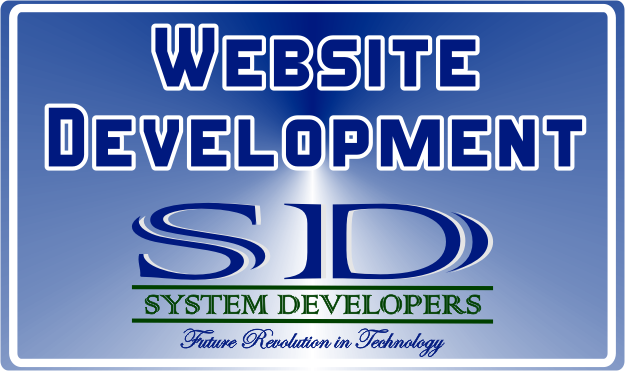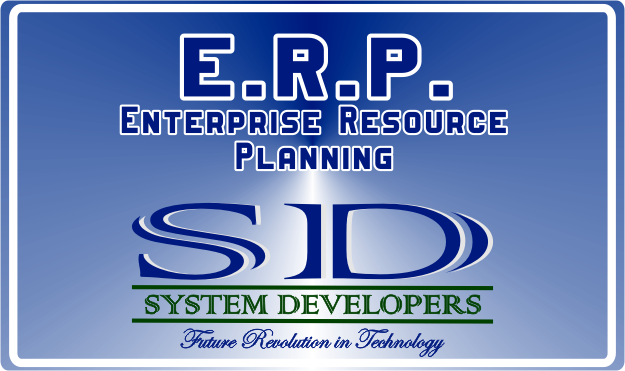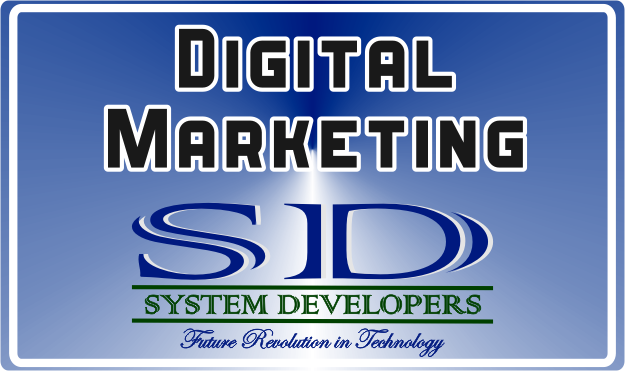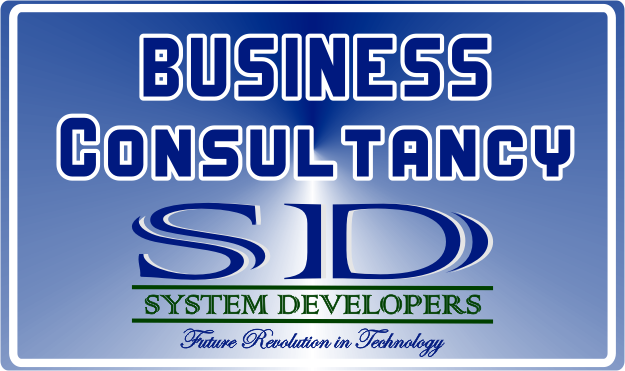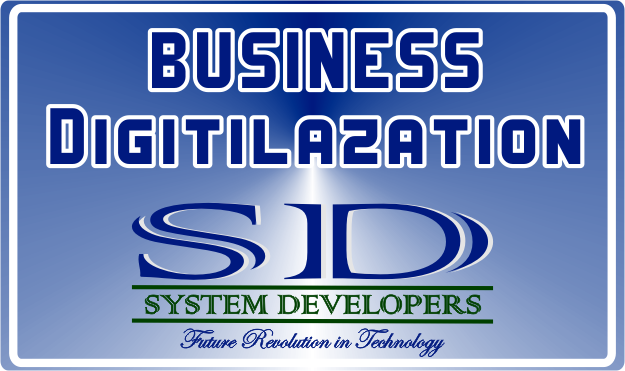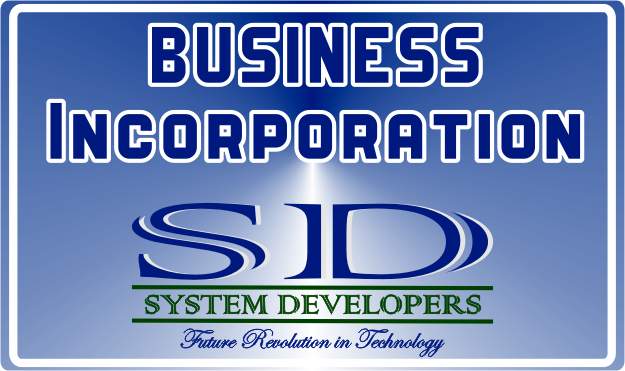Sign up for latest Sass resources news from Restly
Short Description of Services by System Developers:
Services provided by System Developers are given above. The services short details for information is given below for your reference.

Enterprise Resource Planning – ERP is a software solution which integrates several business procedures and tasks into a single system. It helps organizations manage their operations, financials, and supply chain more efficiently and effectively. An ERP system typically includes modules for areas such as accounting, finance, human resources, manufacturing, sales, and distribution.
An ERP system can help organizations in several ways, including:
- Improved efficiency: By integrating various functions into a single system. An ERP system eliminates the need for manual data entry and reduces the risk of errors. The results are faster and efficiently processed.
- Better decision-making: An ERP system provides real-time data and insights into various business functions, enabling better decision-making and more informed strategies.
- Enhanced collaboration: An ERP system allows different departments and functions to share data and collaborate more effectively, improving communication and coordination.
- Increased flexibility: An ERP system allows organizations to adapt to changing business needs by providing the ability to customize and configure the system to meet specific requirements.
- Reduced costs: An ERP system can help organizations reduce costs by optimizing resource utilization, eliminating redundant processes, and minimizing waste.
Implementation of ERP System:
An ERP system can be implemented using an approach called the Enterprise Resource Planning (ERP) implementation methodology. This methodology involves several stages, including:
- Planning: This involves defining the project scope, objectives, timeline, budget, and resources required for implementation.
- Design: This involves defining the system architecture, data model, user interface design, and workflows for each module of the ERP system.
- Development: This involves configuring the ERP system to meet specific requirements using customizations or add-ons as needed.
- Testing: This involves testing the ERP system in a controlled environment to ensure that it meets all requirements and performs as expected.
- Deployment: This involves rolling out the ERP system to production environments and training users on how to use it effectively.
- Maintenance: Involves ongoing support, updates, and maintenance of ERP to ensure that it continues to meet business needs over time.

Website hosting services refer to the process of providing server space and resources to store and deliver a website’s content to users over the internet. This involves several stages, including:
- Server Setup: This involves configuring the server’s operating system, web server software, database management system, and other necessary components to support the website’s requirements.
- Domain Name System (DNS) Configuration: This involves setting up the DNS records to map the website’s domain name to the server’s IP address.
- Website Migration: This involves transferring the website’s files, databases, and configurations from the previous hosting environment to the new one.
Further More:
- Security: This involves implementing security measures such as firewalls, SSL certificates, and regular backups to protect the website from cyber threats and data loss.
- Performance Optimization: This involves configuring server resources such as CPU, RAM, and storage to optimize website performance and minimize response times.
- Scalability: Providing ability to scale resources up or down as needed to accommodate changes in website traffic and usage patterns.
- Support: This involves providing technical support and assistance to users in case of any issues or questions related to hosting services.
Hosting Services Provide:
Website hosting services is provided by web hosting providers. Cloud computing platforms, or content delivery networks (CDNs) depending on the organization’s needs and preferences. Web hosting technologies & services include:
- Shared Hosting: This involves sharing a single server among multiple websites to reduce costs for small businesses or personal websites with low traffic volumes.
- Virtual Private Server (VPS) Hosting: This involves creating a virtual machine on a single physical server to provide dedicated resources for each website. While still sharing some resources with other websites on the same server.
- Dedicated Hosting: This involves leasing an entire physical server for exclusive use by a single website with high traffic volumes or sensitive data requirements.
- Cloud Hosting: This involves using a network of virtual servers spread across multiple data centers. Providing scalability, redundancy, and high availability for websites with dynamic resource requirements.
- Content Delivery Network (CDN) Hosting: This involves distributing website content across multiple servers located in different geographic locations to improve website performance and reduce latency for users in different regions of the world.
Web Hosting Services Includes
Hosting services include a range of technologies, tools, and resources provided by web hosting providers to store, manage, and deliver website content to users over the internet. Some common hosting services include:
- Web Hosting: This involves providing server space and resources to store website files, databases, and configurations. Web hosting services can be provided using various technologies. Such as shared hosting, VPS hosting, dedicated hosting, or cloud hosting.
- Domain Name System (DNS) Management: This involves managing the DNS records that map a website’s domain name to its IP address. DNS management services can include features such as domain forwarding, subdomain creation, and DNS zone editing.
- Email Hosting: This involves providing email servers and resources to manage email accounts and deliver email messages to users. Email hosting services can include features such as email forwarding, autoresponders, and spam filters.
- Content Delivery Network (CDN) Hosting: This involves distributing website content across multiple servers located in different geographic locations. To improve website performance and reduce latency for users in different regions of the world. CDN hosting services can include features such as content caching, traffic routing, and load balancing.
- Security Services: This involves implementing security measures such as firewalls, SSL certificates, and regular backups to protect websites from cyber threats and data loss. Security services can include features such as malware scanning, intrusion detection, and two-factor authentication.
- Scalability Services: This involves providing the ability to scale resources up or down as needed to accommodate changes in website traffic and usage patterns. Scalability services can include features such as auto-scaling, resource monitoring, and load balancing.
- Support Services: This involves providing technical support and assistance to users in case of any issues or questions related to hosting services. Support services can include features such as live chat, phone support, and knowledge base resources.

Website development services refer to the process of creating a website from scratch or revamping an existing one. This involves several stages, including:
- Planning and Strategy: This involves defining the website’s objectives, target audience, content strategy, and functional requirements.
- Design: This involves creating a visual design that reflects the brand and user experience (UX) requirements.
- Development: This involves coding the website using HTML, CSS, JavaScript, and other programming languages as needed.
- Content Creation: This involves creating high-quality content that is optimized for search engines and user engagement.
- Testing: This involves testing the website in a staging environment to ensure that it is functional, responsive, and meets all requirements.
- Launch: This involves deploying the website to a live server and making it accessible to the public.
- Maintenance: This involves ongoing support, updates, and maintenance of the website to ensure that it continues to meet business needs over time.
Web Development Services Includes:
Website development services can be provided by web development agencies, freelance developers, or in-house development teams depending on the organization’s needs and preferences. Web development technologies include:
- Content Management Systems (CMS): These are software applications. That allow users to create, manage, and publish content without requiring any coding knowledge. Examples include WordPress, Drupal, and Joomla!
- Front-end Development Frameworks: These are libraries of pre-built UI components that can be used to accelerate front-end development and improve UX design. Examples include ReactJS, AngularJS, and VueJS.
- Back-end Development Frameworks: These are libraries of pre-built server-side logic that can be used to accelerate back-end development and improve scalability and performance. Examples include NodeJS, Django, and Ruby on Rails (RoR).
- E-commerce Platforms: These are software applications that allow users to create online stores with features. Such as product catalogs, shopping carts, payment gateways, and order management systems. Examples are WooCommerce for WordPress, Shopify etc.
Some common types of websites include:
- Static Websites: These are simple websites with fixed content that does not change frequently. They are typically created using HTML, CSS, and JavaScript and do not require a database or server-side scripting.
- Dynamic Websites: These are websites with dynamic content that changes based on user input or other factors. They are typically created using server-side scripting languages. Such as PHP, Ruby on Rails (RoR), or Python, and require a database to store and manage data.
- E-commerce Websites: These are websites that allow users to buy and sell products online. They typically include features such as product catalogs, shopping carts, payment gateways, and order management systems.
- Content Management System (CMS) Websites: These are websites that allow users to create, manage, and publish content without requiring any coding knowledge. Popular CMS platforms include WordPress, Drupal, and Joomla!
- Blogs: These are websites that focus on publishing articles, news, or opinions on a specific topic or theme. They typically include features such as commenting systems, social media integration, and RSS feeds.
Further Types of websites are:
- Portfolios: These are websites that showcase an individual’s or organization’s work, skills, and achievements in a specific field or industry. They typically include features such as project galleries, testimonials, and contact forms.
- Landing Pages: These are single-page websites designed to convert visitors into leads or customers through a specific call-to-action (CTA). They typically include features such as lead magnets, forms, and social proof elements.
- Social Media Websites: These are websites that allow users to connect with others, share content, and participate in online communities around shared interests or identities. They typically include features such as user profiles, messaging systems, and groups or forums.

Digital media advertisement refers to the promotion of products, services, or brands through digital channels. Such as websites, social media platforms, search engines, email, mobile apps, and digital billboards. Digital media advertising offers several advantages over traditional advertising methods, including:
- Targeted advertising: Digital media allows advertisers to target specific audiences based on demographics, interests, behaviors, and locations. This ensures that the ads are shown to people who are most likely to be interested in the product or service being advertised.
- Measurable results: Digital media provides detailed analytics and metrics. That allow advertisers to track the performance of their campaigns and make data-driven decisions. This helps to optimize campaigns for better results and return on investment (ROI).
- Cost-effective: Digital media advertising is generally more cost-effective than traditional advertising methods. Because it allows for more precise targeting and eliminates the need for expensive printing, distribution, and production costs.
- Flexibility: Digital media advertising allows for more flexibility in terms of ad formats, placements, and messaging. This enables advertisers to create more engaging and interactive ads that resonate with their target audiences.
- Real-time optimization: Digital media allows for real-time optimization of campaigns based on performance data. This enables advertisers to make adjustments and optimizations as needed to improve results and ROI.
Some forms of digital media advertising include:
- Search engine marketing (SEM): This involves placing ads on search engine results pages (SERPs) through paid search advertising (PPC) or search engine optimization (SEO).
- Social media advertising: This involves placing ads on social media platforms such as Facebook, Instagram, Twitter, LinkedIn, and TikTok.
- Display advertising: This involves placing banner ads on websites or mobile apps through display advertising networks such as Google Display Network (GDN), AdRoll, or Criteo.
- Email marketing: This involves sending promotional emails to subscribers through email marketing platforms such as Mailchimp, Campaign Monitor, or Constant Contact.
- Mobile app advertising: This involves placing ads within mobile apps through mobile app advertising networks such as AdMob or Unity Ads.

Digitalization is the process of transforming traditional business processes, operations, and models into digital formats. It involves the use of digital technologies such as cloud computing, big data, artificial intelligence. And the internet of things (IoT) to improve efficiency, reduce costs, and enhance customer experiences.
Businesses can benefit from digitalization in many ways, including:
- Improved operational efficiency: Digital technologies can automate routine tasks, streamline workflows, and eliminate manual processes, resulting in faster and more accurate operations.
- Enhanced customer experiences: Digital channels such as websites, mobile apps, and social media can provide customers with convenient and personalized experiences, improving satisfaction and loyalty.
- Increased competitiveness: Digital technologies can enable businesses to innovate faster, adapt more quickly to changing market conditions, and gain a competitive edge.
- Reduced costs: Digitalization can eliminate paper-based processes, reduce the need for physical infrastructure, and optimize resource utilization, resulting in significant cost savings.
- Better decision-making: Digital technologies can provide businesses with real-time insights into their operations and customers, enabling more informed and data-driven decisions.
Businesses that are looking to digitalize their operations can seek the services of digitalization consultants or providers.
These services may include:
- Digital strategy development: Consultants can help businesses define their digital transformation goals, develop a roadmap for implementation. Also to identify the right technologies and solutions to achieve their objectives.
- Digital process automation: Providers can help businesses automate their processes using digital technologies. Such as robotic process automation (RPA), workflow automation, and document management systems (DMS).
- Cloud computing services: Providers can offer cloud-based solutions for storage, computing power, and software applications to enable remote access and collaboration.
- Data analytics services: Providers can offer data analytics tools and services to help businesses extract insights from their data and make informed decisions based on those insights.
- Cybersecurity services: Providers can offer cybersecurity solutions to protect businesses’ digital assets from cyber threats. Such as malware, phishing attacks, and data breaches.
- Digital marketing services: Providers can offer digital marketing solutions. Such as search engine optimization (SEO), pay-per-click (PPC) advertising, social media marketing (SMM). It also uses content marketing to help businesses reach their target audiences online.

